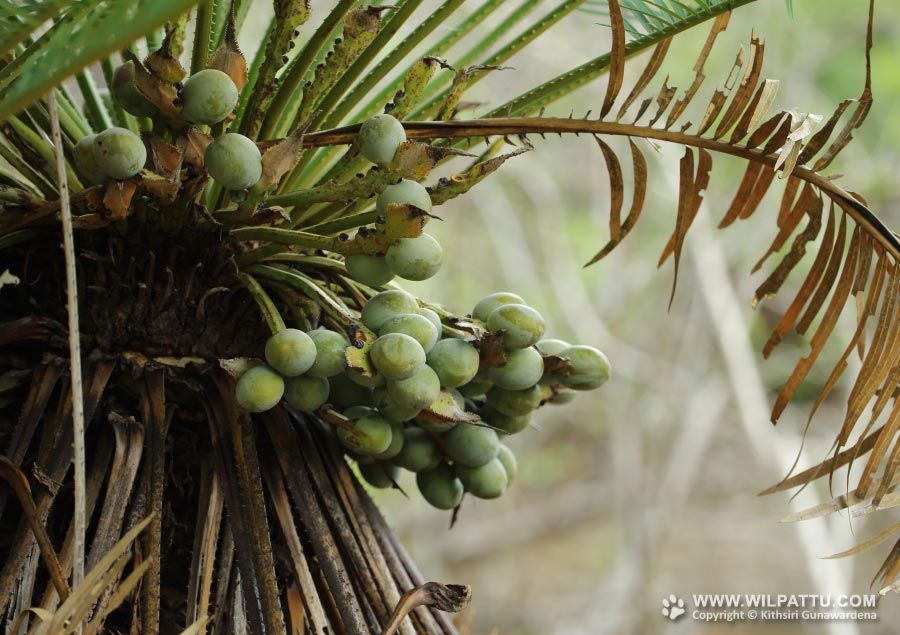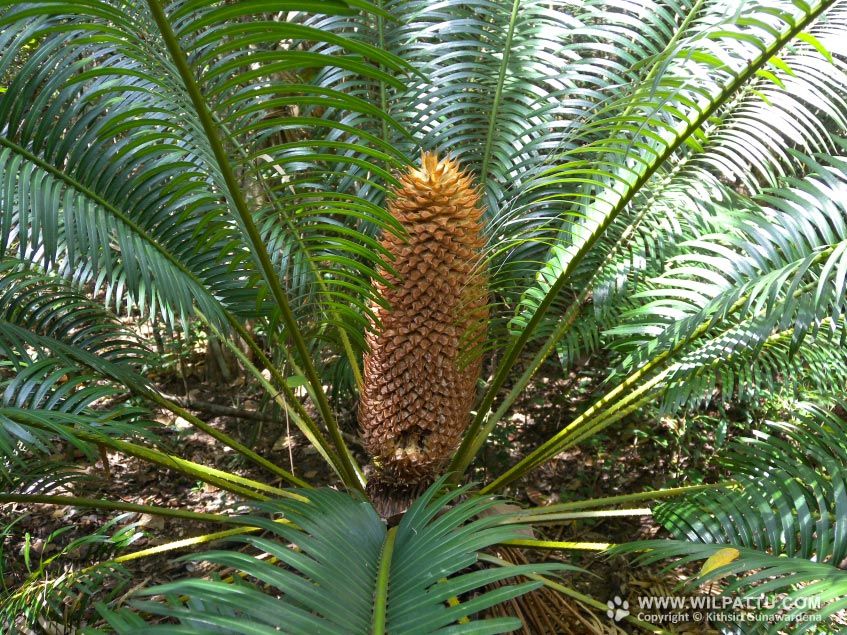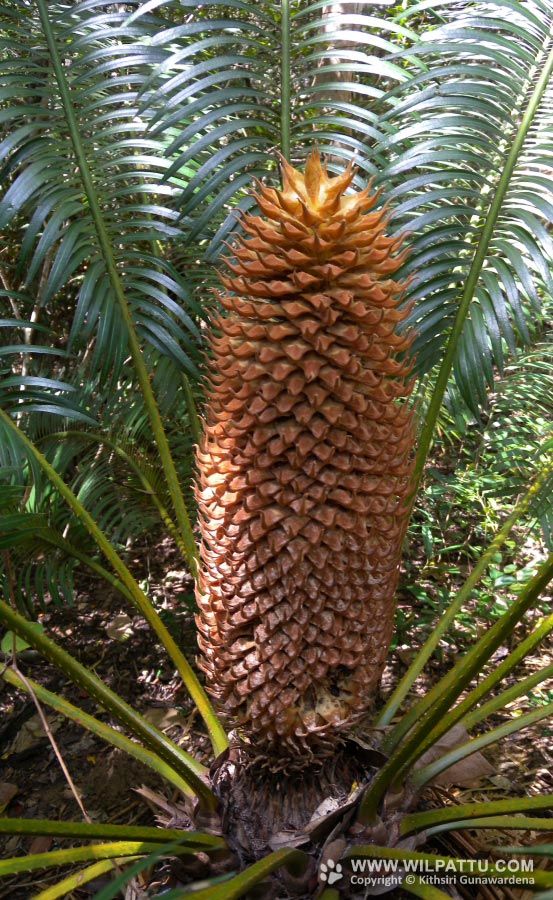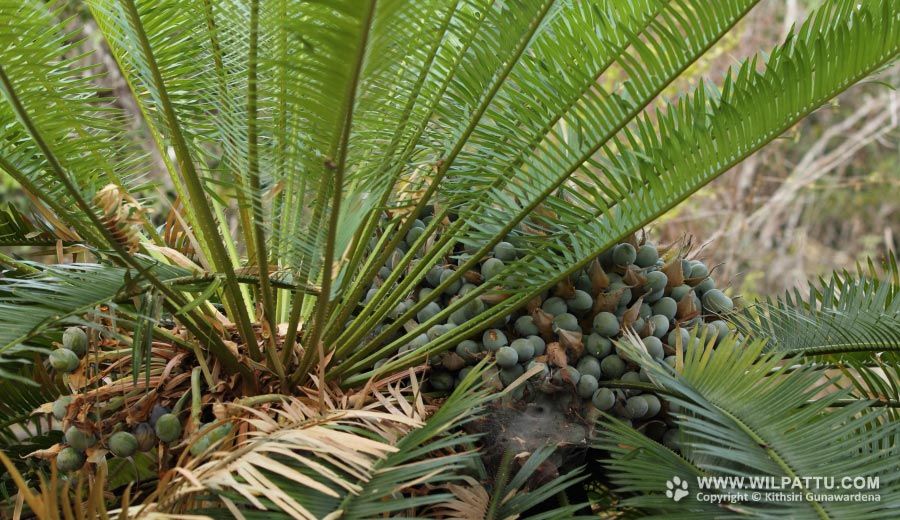
Wild Flowers ‹‹ Go Back
The trees and plants that we observe in our environment can be broadly categorised in to three groups as follows
- Ferns, which do not produce flowers, fruits or seeds and reproduce by producing spores.
- Gymnosperms or non flowering plants with unenclosed seeds (unfertilized seeds in cones)
- Angiosperms or Flowering plants and trees with enclosed seeds (fertilized seeds in fruits)
While thee are more than 3,100 species of Angiosperms recorded in the country there are only two species of Gymnosperms. Thus almost all plants and trees we are familiar with, except ferns, belong to a group called the flowering plants or Angiosperms.
Of the two Gymnosperm species one, Maha Madu Cycas zeylanica, is critically endangered and the other is the present species, Madu.
This species also occurs, in southern India where it is considered endangered and is thus listed on Appendix II of the CITES Appendices.
In Sri Lanka this species is not uncommon and conservation status of this species is regarded as Vulnerable. (National List 2012).
The females of a small species of butterfly known as the Plains Cupid lays its eggs on the tender leaves of this species and the caterpillars feed on them as they grow to become butterflies.
I have seen this species at most dry zone National Parks and lower hills up to about 500 meters in altitude. They are common in Gal oya national park and the Nilgala savana forests.
Madu is common in the main villu areas of Wilpattu and when driving past them at Kudapatessa and Nelum Wila one is able to detect the characteristic aroma produced by these ancient trees. I have observed the male trees producing their cones in April.




